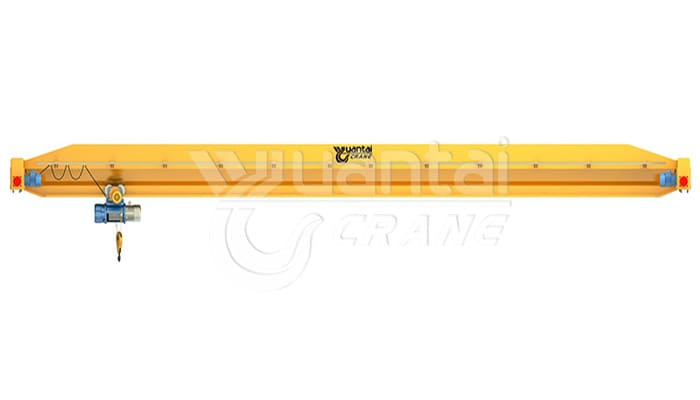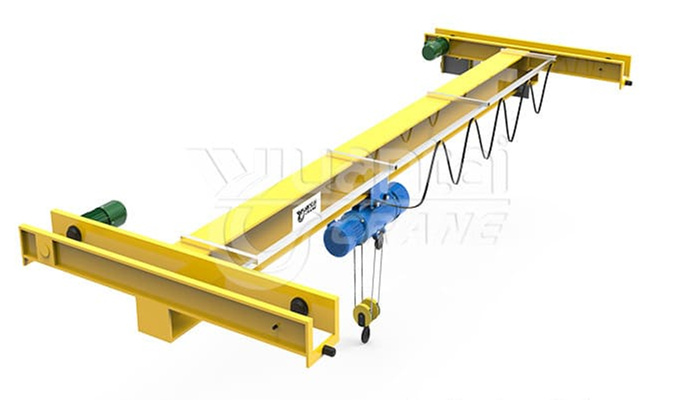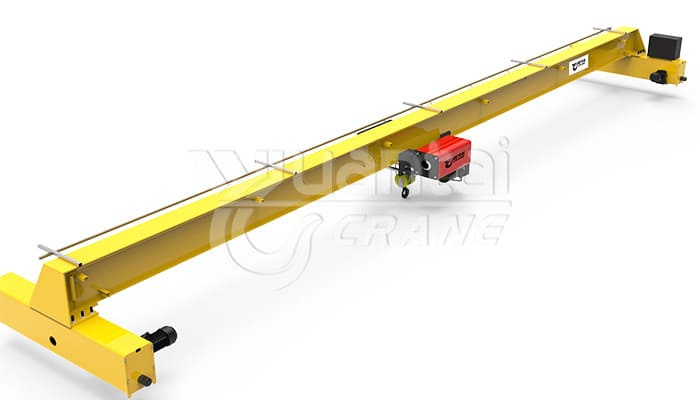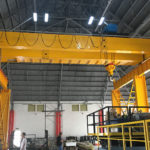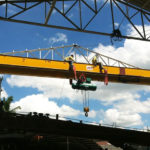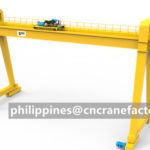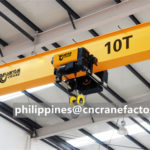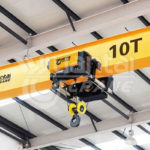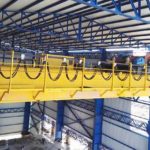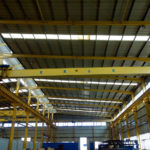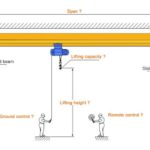What Is a Single Girder EOT Crane?
A Single Girder EOT (Electric Overhead Traveling) Crane is a type of overhead crane that features a single horizontal beam, or girder, for lifting and transporting heavy loads. These cranes are commonly used in factories, warehouses, and manufacturing facilities where efficient material handling is crucial.
The 5-Ton Single Girder EOT Crane: A Versatile Solution
- Optimal Capacity:
The 5 ton capacity strikes a balance between handling substantial loads and maintaining operational flexibility. It is suitable for a diverse range of industries and applications. - Efficient Material Handling:
With a 5 ton capacity, these cranes excel in efficiently moving materials within a facility. This is particularly advantageous in industries where timely material handling is critical for production processes. - Compact Design:
The single girder design ensures a compact footprint, making the 5 ton crane ideal for facilities with spatial constraints. This design allows for maximum vertical lift while minimizing the impact on floor space. - Cost-Effective Solution:
For businesses looking for cost-effective lifting solutions without compromising on performance, the 5-ton single girder EOT crane provides an optimal balance. - Adaptable to Various Industries:
From manufacturing plants to warehouses, the 5 ton single girder EOT crane finds applications in diverse industries. Its adaptability makes it a versatile choice for businesses with varied lifting needs.
Single Girder EOT Crane Specification
| Lifting Capacity | 1~32ton | Specify the lifting capacity based on the maximum load the crane needs to handle. |
| Span | 7.5~28.5m | The span length is the distance between the runway rails. |
| Lifting Height | Customized on request | The lifting height is the maximum vertical distance the load can be lifted. |
| Hoist Type | Wire Rope Hoist/Chain Hoist | The hoist is the mechanism responsible for lifting and lowering the load. |
| Speeds | Customized on request | Specify lifting and trolley travel speeds to meet the required efficiency for material handling. |
| Control System | manual/electric control systems/radio Remote Control | / |
| Duty Class | A3,A4 | Duty class defines the load capacity and number of load cycles per hour. |
| Safety Features | overload protection/emergency braking/limit switch | / |
| Suitable Temperature | -20~40℃ | / |
Advantages of Single Girder EOT Crane
- Space Efficiency:
Single girder cranes are known for their compact design, making them ideal for facilities with limited space. They provide maximum lifting height without compromising floor space. - Cost-Effective:
Compared to double girder cranes, single girder EOT cranes are often more cost-effective. This makes them an attractive option for businesses looking to optimize their budget while maintaining high-quality lifting capabilities. - Ease of Installation:
The simplicity of the design facilitates a quicker and more straightforward installation process, minimizing downtime for businesses. - Versatility:
Single girder EOT cranes are versatile and can be customized to meet specific lifting requirements. They are suitable for a wide range of applications, from light-duty lifting to heavier loads.
Single Girder EOT Crane Design
The single girder EOT crane design must adhere to relevant industry standards and regulations, ensuring the crane meets safety and performance requirements.
Professional engineers and designers typically oversee the entire design process, considering factors such as load calculations, structural analysis, and safety protocols to ensure the single girder EOT crane meets the highest standards of performance and reliability.
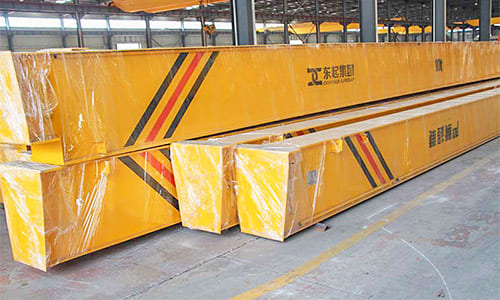
Girder Structure:
The primary structural component is the girder, a horizontal beam that spans the width of the crane. The design of the girder involves considerations such as material selection, size, and shape.
Common materials for girder construction include structural steel. The design must ensure the girder can withstand the intended load capacity and span length while maintaining structural integrity.
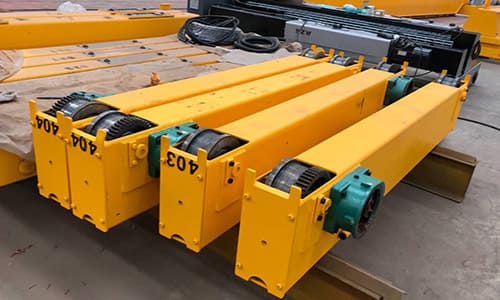
End Carriages:
End carriages support the girder and house the wheels on which the crane travels along the runway. The design of end carriages involves factors such as load distribution, stability, and alignment with the runway rails.
End carriages are often equipped with wheels that can move along the rails, allowing for horizontal movement of the crane.
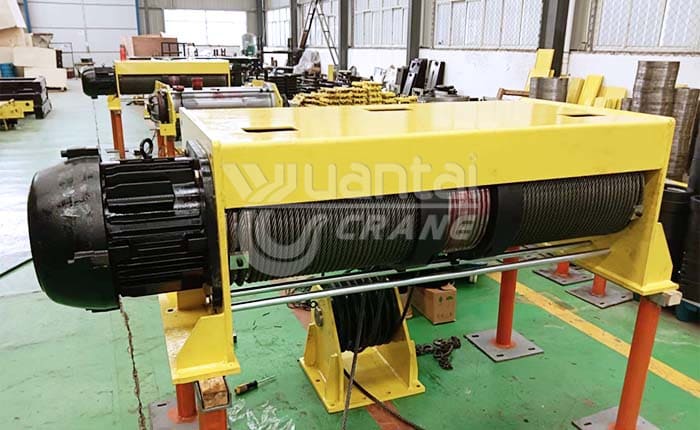
Hoisting Mechanism:
The hoisting mechanism involves the hoist, which lifts and lowers the load. The design includes the type of hoist (wire rope or chain), hoisting speed, and lifting capacity.
Safety features such as overload protection and emergency braking are integral parts of the hoisting mechanism design.
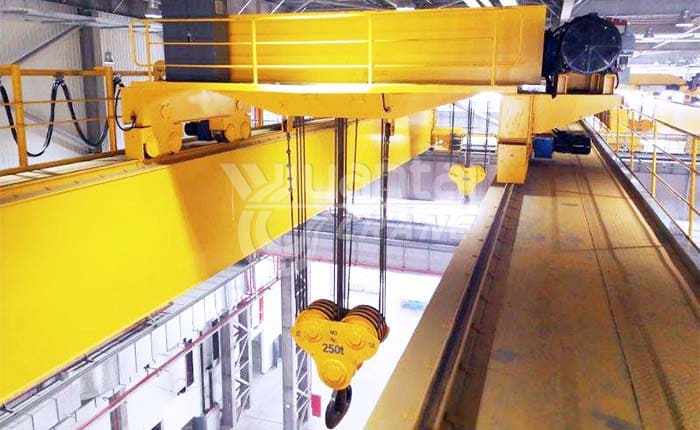
Trolley:
The trolley is responsible for moving the hoist horizontally along the length of the girder. Trolley design considerations include speed, precision, and alignment with the girder.
Trolleys may be manually operated or motorized, depending on the design and intended use of the crane.
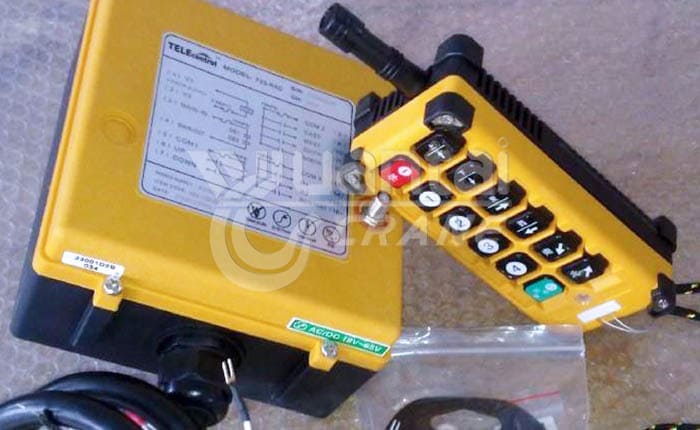
Control System:
The control system design is crucial for the overall operation of the crane. It includes the operator’s interface, whether manual or electronic controls and may incorporate advanced features such as remote control.
The design ensures smooth and precise control of the crane’s movements, contributing to safety and efficiency.
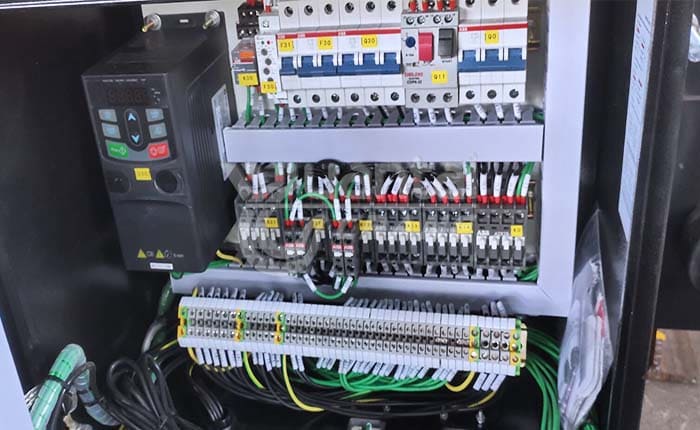
Electrical System:
The electrical system encompasses the power supply, wiring, and components that enable the crane’s electrical functions. This includes motors for hoisting and trolley movements, as well as safety devices and control panels.
The design ensures compliance with electrical standards and safety regulations.
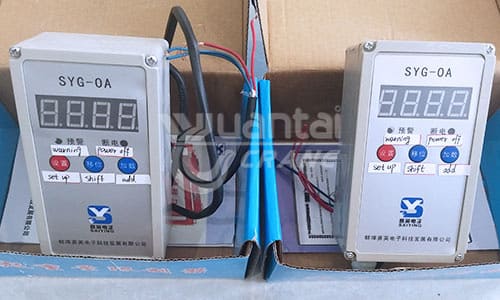
Safety Features:
The design incorporates various safety features to protect both personnel and equipment. These may include limit switches, emergency brakes, overload protection devices, and warning systems.
Safety features are essential to prevent accidents and ensure the crane operates within specified parameters.
Single Girder EOT Crane Price
Determining the price of a single girder Electric Overhead Traveling (EOT) crane involves considering various factors, as the cost can vary based on specifications, capacity, and features.
- Capacity:
The lifting capacity of the crane is a significant factor in determining its price. A 5-ton single girder EOT crane, for example, will generally have a different price than a crane with a higher or lower lifting capacity. - Span Length:
The span length, or the distance between the runway rails, is another critical factor. A longer span requires a sturdier design and additional materials, impacting the overall cost. - Hoist Type:
The type of hoist system used in the crane also influences the price. Different hoist systems, such as wire rope hoists or chain hoists, come with varying costs. - Customization:
Customization options, such as specific lifting speeds, control systems, and safety features, can affect the overall cost. Businesses looking for tailored solutions may incur additional expenses based on their unique requirements. - Additional Features:
Certain features and technologies, such as remote control systems, advanced safety features, and automation capabilities, can add to the cost of the crane. - Installation and Maintenance Services:
Some suppliers may include installation and maintenance services in the overall package, impacting the total cost. These services can contribute to the long-term efficiency and reliability of the crane.
To provide a rough estimate, a basic 5-ton single girder EOT crane without many additional features could start at around $10,000 to $30,000. However, prices can go higher based on the factors mentioned above. contact us for an accurate free quote.
Key Considerations for Choosing a Single Girder EOT Crane
- Manufacturer Reputation:
Choosing a reputable manufacturer is crucial for ensuring the quality and reliability of the crane. Look for manufacturers with a proven track record, positive customer reviews, and adherence to industry standards. - Supplier Reliability:
A reliable supplier is essential for timely delivery and efficient customer support. Evaluate suppliers based on their reputation, delivery timelines, and customer service responsiveness. - Customization Options:
Different industries have varied lifting requirements. A manufacturer offering customization options ensures that the crane is tailored to meet specific needs, enhancing its efficiency and effectiveness. - Compliance with Safety Standards:
Safety is of paramount importance in industrial settings. Choose a manufacturer and supplier that adhere to safety standards and provide features such as overload protection and emergency braking systems. - After-Sales Support:
A comprehensive after-sales support system is essential for addressing any issues that may arise post-purchase. Evaluate manufacturers and suppliers based on the availability of spare parts, maintenance services, and customer support.
